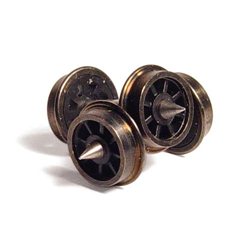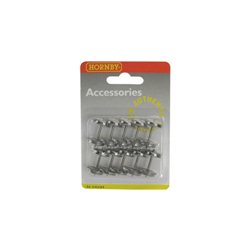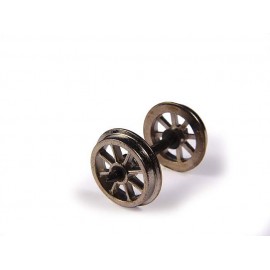Thomas the Tank Engine is a beloved British children's character who originated in a series of books titled The...
No products
Product successfully added to your shopping cart
There are 0 items in your cart. There is 1 item in your cart.
Search Tips
Christmas and New Year
We are dispatching orders every weekday apart from Christmas Day, Boxing Day and New Year's Day.
If you order is time critical, select next day delivery at checkout.
The shop in Sandown is closed from 25th December, reopening on 30th December.
How do train wheels maintain traction with the track in wet or icy conditions ?
Train wheels maintain traction with the track in wet or icy conditions through a combination of design features and operational practices.
Here are a few key factors:
- Wheel profile : train wheels have a specific profile known as a flange. The flange is a raised rim on the inside of the wheel that helps guide the train along the track. The weight of the locomotive and the shape and configuration of the wheel are a very efficient combination in ensuring wheel traction.
- Weight distribution : the weight of the train is distributed between the wheels to maximize traction. This is especially important in slippery conditions. By having multiple wheels and distributing the weight evenly, the chances of any one wheel losing traction are reduced.
- Traction control systems : some modern trains are equipped with traction control systems that can adjust the power applied to the wheels based on the conditions. These systems can detect wheel slip and adjust the power to prevent excessive slipping, thereby maintaining traction.
- Sanding : in particularly slippery conditions, trains may use sanding systems to improve traction. Sand is applied to the track in front of the wheels, creating a rough surface that enhances grip. The sand is typically stored in a reservoir on the train and can be manually or automatically released as needed.
- Reduced speed : in extremely slippery conditions, trains may need to reduce their speed to ensure safe operation. Slower speeds allow for better control and reduce the chances of wheels slipping.
Overall, maintaining traction in wet or icy conditions is a combination of design, weight distribution, traction control systems, sanding and appropriate speed adjustments. By implementing these measures, trains can continue to operate safely and efficiently even in challenging weather conditions.
Traction may also become a consideration for railway modellers. It is important to note that different scales of model trains, such as OO/HO and N may have different levels of traction due to their size and weight. OO/HO gauge, for example, is typically larger and heavier than N gauge, which can result in better traction on the track.
Click here to receive the tips weekly in your mailbox. You can unsubscribe at any time.










